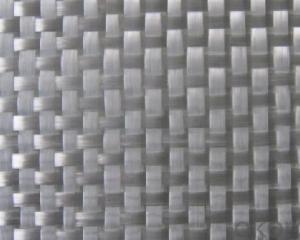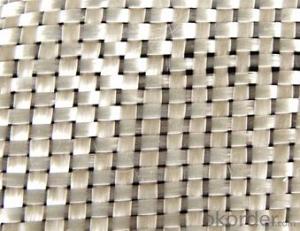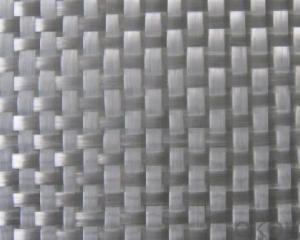E-glass Fiberglass Woven Roving,500g,1040mm
- Loading Port:
- China Main Port
- Payment Terms:
- TT or LC
- Min Order Qty:
- -
- Supply Capability:
- -
OKorder Service Pledge
OKorder Financial Service
You Might Also Like
Structure of Woven Roving
1)Low Fuzz
2)Fast Wet-out&Impregnation
3)Easy Lay-up&Air Release
4)Excellent Mechanical Strength
Main Features of Woven Roving
1.CWR400
2.360-380g/m2
3.77.5px or 2250px width
4.plastic woven bag
Application of Woven Roving
Unit | Product No. | Weight(gsm) | Technique | Moisture content | combustible matter content(%) |
M | EWR260 | 264±13 | Plain | ≤0.15 | 0.40-0.80 |
M | EWR270 | 261±13.5 | Plain | ≤0.15 | 0.40-0.80 |
M | EWR360 | 354±18 | Plain | ≤0.15 | 0.40-0.80 |
M | EWR500 | 504±25 | Plain | ≤0.15 | 0.40-0.80 |
M | EWR580 | 576±29 | Plain | ≤0.15 | 0.40-0.80 |
M | EWR600 | 622±30 | Plain | ≤0.15 | 0.40-0.80 |
M | EWR800 | 850±40 | Plain | ≤0.15 | 0.40-0.80 |
M | CWR200 | 200±15 | Plain | ≤0.15 | 0.40-0.80 |
M | CWR400 | 385±30 | Plain | ≤0.15 | 0.40-0.80 |
M | CWR600 | 600±45 | Plain | ≤0.15 | 0.40-0.80 |
M | CWR800 | 810±40 | Plain | ≤0.15 | 0.40-0.80 |
Images:

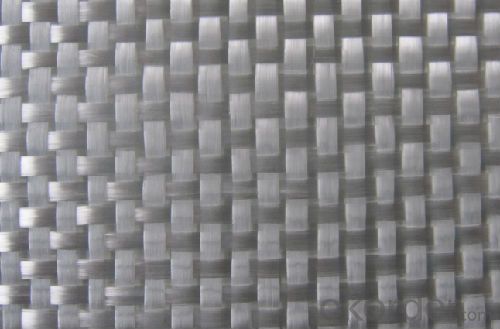
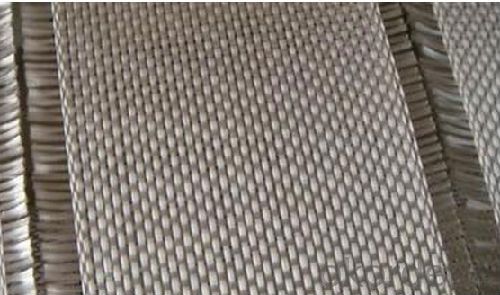
FAQ of Woven Roving
1. Why Choose us?
CNBM is a stated own company, provide the guarantee for the best quality, best service and safety business.
2. How will we guarantee the quality?
a, ISO 9001-2008 quality control system;
b, Strict and regular quality control in production;
c, Inspeciation when loading into container before shippment;
d, Sample stock for one year for quality tracing and record.
3. What is your MOQ?
Our MOQ is one pallet.
4. Can you provide sample?
Yes, samples are in stock. we can offer free sample for you.
5. Payment terms?
We can accept L/C, T/T etc.
6. Do you offer OEM service?
Yes, we can print customers’ logo on the packaging;
And the size and specification can be produced and design according to your demand.
- Q:What are the typical roll sizes available for fiberglass mat tissue?
- The manufacturer and specific application determine the varying sizes of fiberglass mat tissue rolls. Generally, they range in width from 50 inches to 120 inches and in length from 100 yards to 1,000 yards. These sizes are frequently utilized in construction, automotive, and marine industries for purposes such as insulation, reinforcement, and soundproofing. It should be emphasized that the availability of particular roll sizes may vary depending on the supplier and the intended use of the fiberglass mat tissue.
- Q:How is fiberglass mat tissue used in the manufacturing of wind turbine blades?
- Fiberglass mat tissue is extensively used in the manufacturing of wind turbine blades due to its exceptional strength, durability, and lightweight properties. It serves as a critical reinforcement material that enhances the structural integrity and performance of the blades. During the manufacturing process, layers of fiberglass mat tissue are carefully placed and bonded together to form the composite structure of the wind turbine blade. The tissue layers are typically impregnated with a resin, such as epoxy or polyester, to create a strong and rigid matrix. The use of fiberglass mat tissue allows for the creation of complex blade shapes with high dimensional accuracy. It provides excellent resistance against various environmental factors, such as UV radiation, moisture, and temperature fluctuations, ensuring the longevity of the turbine blades in harsh weather conditions. The mat tissue also plays a crucial role in distributing and absorbing the loads experienced by the wind turbine blades. It enhances the overall strength and stiffness of the structure, allowing the blades to withstand the aerodynamic forces exerted by the wind. This reinforcement is particularly important to prevent blade deformation and fatigue, ensuring optimal performance and safety over the lifetime of the turbine. Moreover, the lightweight nature of fiberglass mat tissue contributes to the efficiency of wind turbine blades. The reduced weight of the composite structure enables the blades to rotate more easily and capture more energy from the wind. This, in turn, increases the power output and efficiency of the wind turbine system. Overall, fiberglass mat tissue is a fundamental component in the manufacturing of wind turbine blades, providing essential reinforcement, durability, and lightweight properties. Its use significantly contributes to the performance, reliability, and sustainability of wind energy generation.
- Q:Can fiberglass mat tissue be used for insulating metal roofs?
- Yes, fiberglass mat tissue can be used for insulating metal roofs. It provides a layer of insulation that helps to regulate temperature and minimize heat transfer, making it suitable for insulating metal roofs.
- Q:What is the tensile strength of fiberglass mat tissue?
- Fiberglass mat tissue usually has a tensile strength ranging from 30 to 150 pounds per inch (lb/in). Nevertheless, it is crucial to bear in mind that the precise tensile strength may differ based on the particular type and quality of fiberglass mat tissue utilized.
- Q:Is fiberglass mat tissue compatible with different types of resins?
- Fiberglass mat tissue is typically compatible with various resins. It is a versatile material that can be combined with different resins, such as polyester, epoxy, and vinyl ester resins. The compatibility between the fiberglass mat tissue and the resin relies on factors like the resin's specific type, formulation, and the intended use of the composite material. Nevertheless, in most situations, fiberglass mat tissue can be utilized with different resins to produce robust and long-lasting composite materials. To ensure optimal compatibility and performance, it is crucial to carefully adhere to the manufacturer's recommendations and guidelines for resin selection and application.
- Q:What are the applications of fiberglass mat tissue?
- Fiberglass mat tissue is a versatile material that finds numerous applications across various industries. Some of the key applications of fiberglass mat tissue are: 1. Construction and Building Materials: Fiberglass mat tissue is widely used in the construction industry as a reinforcement material. It is commonly used in the manufacturing of roofing shingles, insulation materials, and wall coverings. The strong and durable nature of fiberglass mat tissue enhances the structural integrity of buildings and improves their resistance to external elements such as wind, moisture, and temperature changes. 2. Automotive Industry: Fiberglass mat tissue is extensively used in the automotive sector for manufacturing various components such as door panels, headliners, trunk liners, and interior trim parts. The lightweight and high strength properties of fiberglass mat tissue make it an ideal material for reducing the overall weight of vehicles while maintaining their structural integrity. 3. Marine Industry: Fiberglass mat tissue is widely used in the marine industry for the production of boat hulls, decks, and other structural components. The corrosion-resistant nature of fiberglass mat tissue makes it suitable for marine applications where exposure to water and harsh weather conditions is common. 4. Pipe Manufacturing: Fiberglass mat tissue is used in the production of fiberglass reinforced pipes. These pipes find applications in various industries such as oil and gas, chemical, and water management. The high strength and corrosion-resistant properties of fiberglass mat tissue make it an excellent choice for manufacturing pipes that can withstand high pressure and harsh chemical environments. 5. Filtration Systems: Fiberglass mat tissue is used in the production of air filters and liquid filtration systems. The fibrous structure of the material allows for efficient filtration by trapping dust particles, dirt, and other contaminants. This makes fiberglass mat tissue a preferred choice for applications requiring high-efficiency filtration, such as HVAC systems, industrial air filters, and water treatment plants. Overall, the applications of fiberglass mat tissue are vast and diverse, ranging from construction and automotive industries to marine and filtration systems. Its unique properties make it an invaluable material for enhancing structural integrity, reducing weight, and improving performance across various sectors.
- Q:How does fiberglass mat tissue compare to fiberglass mesh?
- Fiberglass mat tissue and fiberglass mesh are both commonly used materials in various applications, but they have distinct characteristics and purposes. Fiberglass mat tissue is a lightweight and flexible material that is commonly used in the production of fiberglass-reinforced plastics (FRP). It is made by randomly dispersing glass fibers onto a mesh or non-woven fabric, which is then bonded together with a resin. The resulting material has a smooth surface and a higher tensile strength compared to fiberglass mesh. It provides excellent strength and stiffness, making it ideal for applications that require structural reinforcement, such as automotive parts, boat hulls, and wind turbine blades. On the other hand, fiberglass mesh is a woven fabric made from continuous glass fibers. It has an open mesh structure, which allows for better resin penetration and adhesion. Fiberglass mesh is commonly used for reinforcing surfaces, such as concrete, stucco, and drywall. It provides excellent crack resistance, dimensional stability, and impact resistance. Fiberglass mesh is particularly useful in construction and renovation projects, where it is used to reinforce surfaces and prevent cracking. In summary, fiberglass mat tissue is more suitable for applications that require structural reinforcement and strength, such as in the production of FRP. It provides a smooth surface and offers high tensile strength. Fiberglass mesh, on the other hand, is commonly used for reinforcing surfaces and preventing cracking in construction projects. It has an open mesh structure, allowing for better resin penetration and adhesion. Ultimately, the choice between fiberglass mat tissue and fiberglass mesh depends on the specific requirements of the application.
- Q:Can fiberglass mat tissue be used for making insulation jackets?
- Yes, fiberglass mat tissue can be used for making insulation jackets. Fiberglass mat tissue is a versatile material that is commonly used in various insulation applications due to its excellent thermal insulation properties. It is lightweight, flexible, and provides effective insulation against heat transfer. When used in insulation jackets, fiberglass mat tissue can help to retain heat and prevent heat loss, making it an ideal choice for applications where thermal insulation is required. Additionally, fiberglass mat tissue is also fire-resistant, which further enhances its suitability for insulation jackets.
- Q:What are the recommended storage and handling practices for fiberglass mat tissue?
- The recommended storage and handling practices for fiberglass mat tissue include keeping it in a dry and well-ventilated area, away from direct sunlight or heat sources. It should be stored horizontally on a clean and level surface to prevent any damage or deformation. When handling, it is advisable to wear protective gloves and safety glasses to avoid any contact with the skin or eyes. Additionally, it is important to handle the material with care to prevent tearing or puncturing, and to avoid any exposure to moisture or chemicals that may degrade its quality.
- Q:How does the strength of fiberglass mat tissue compare to other reinforcement materials?
- In comparison to other reinforcement materials, such as steel or carbon fiber, fiberglass mat tissue possesses a considerable level of strength. Comprised of an intricate arrangement of numerous glass fibers, this material proves to be robust and durable. Commonly employed in applications necessitating great strength, such as the construction industry for bolstering concrete structures, the automotive sector for manufacturing lightweight yet sturdy components, and the aerospace industry for constructing aircraft parts. Fiberglass mat tissue presents several advantages when contrasted with other reinforcement materials. Firstly, it exhibits a relatively low weight, rendering it more manageable and easier to transport. Furthermore, it boasts a high tensile strength, enabling it to endure stretching or pulling forces without succumbing to breakage. It also showcases impressive impact resistance and possesses the ability to absorb energy, making it suitable for contexts where impact resistance plays a crucial role. Moreover, fiberglass mat tissue demonstrates exceptional resistance to corrosion, making it suitable for deployment in harsh environments or in contact with chemicals. Unlike steel, it does not rust or deteriorate over time. Additionally, fiberglass mat tissue is non-conductive, a quality that proves useful in scenarios where electrical conductivity could pose a safety hazard or interfere with electronic equipment. In conclusion, fiberglass mat tissue's strength is regarded as exceptional when compared to other reinforcement materials. Its high tensile strength, lightweight composition, corrosion resistance, and impact resistance render it a versatile and widely utilized substance across various industries.
1. Manufacturer Overview |
|
|---|---|
| Location | |
| Year Established | |
| Annual Output Value | |
| Main Markets | |
| Company Certifications | |
2. Manufacturer Certificates |
|
|---|---|
| a) Certification Name | |
| Range | |
| Reference | |
| Validity Period | |
3. Manufacturer Capability |
|
|---|---|
| a)Trade Capacity | |
| Nearest Port | |
| Export Percentage | |
| No.of Employees in Trade Department | |
| Language Spoken: | |
| b)Factory Information | |
| Factory Size: | |
| No. of Production Lines | |
| Contract Manufacturing | |
| Product Price Range | |
Send your message to us
E-glass Fiberglass Woven Roving,500g,1040mm
- Loading Port:
- China Main Port
- Payment Terms:
- TT or LC
- Min Order Qty:
- -
- Supply Capability:
- -
OKorder Service Pledge
OKorder Financial Service
Similar products
New products
Hot products
Related keywords
